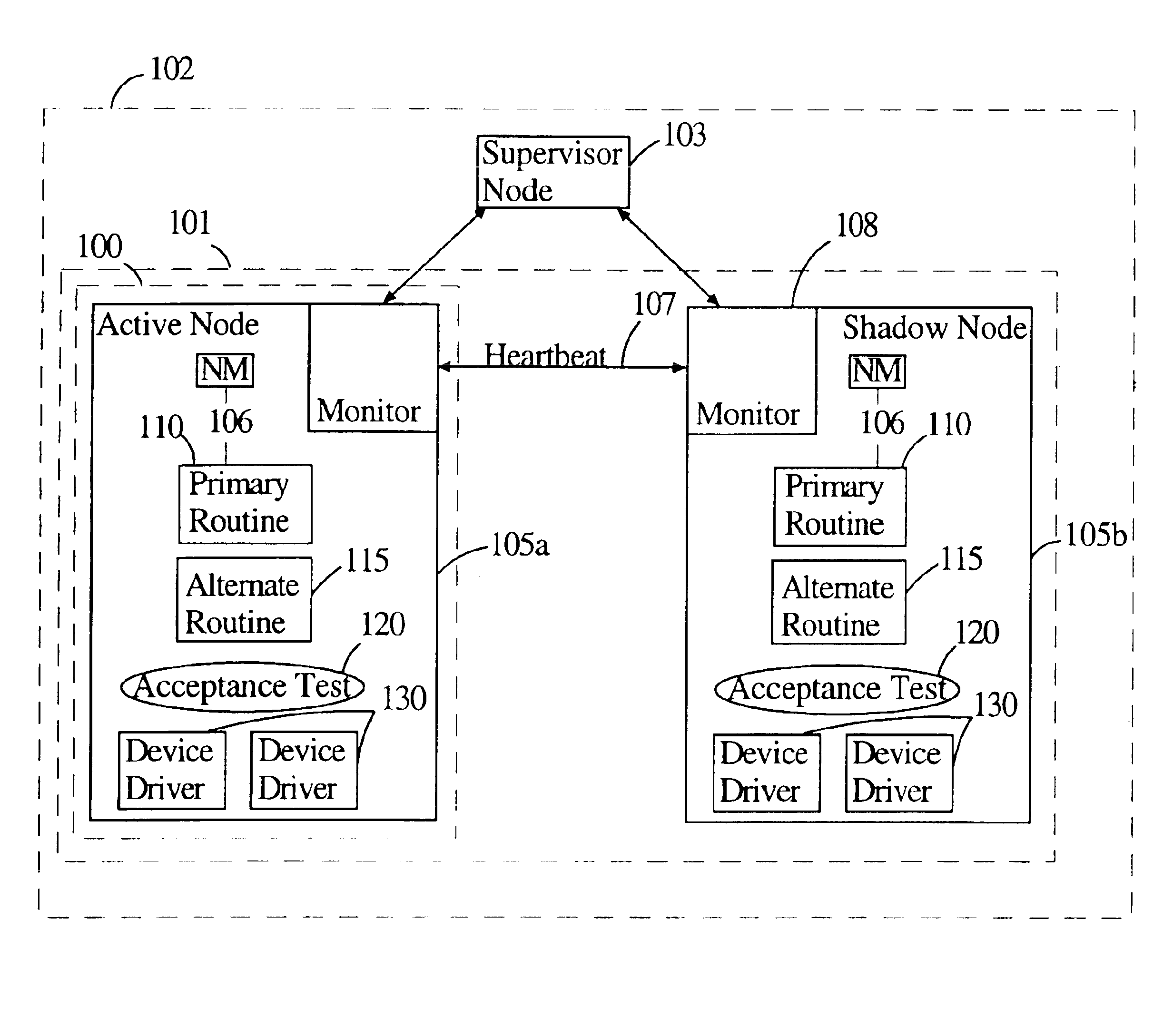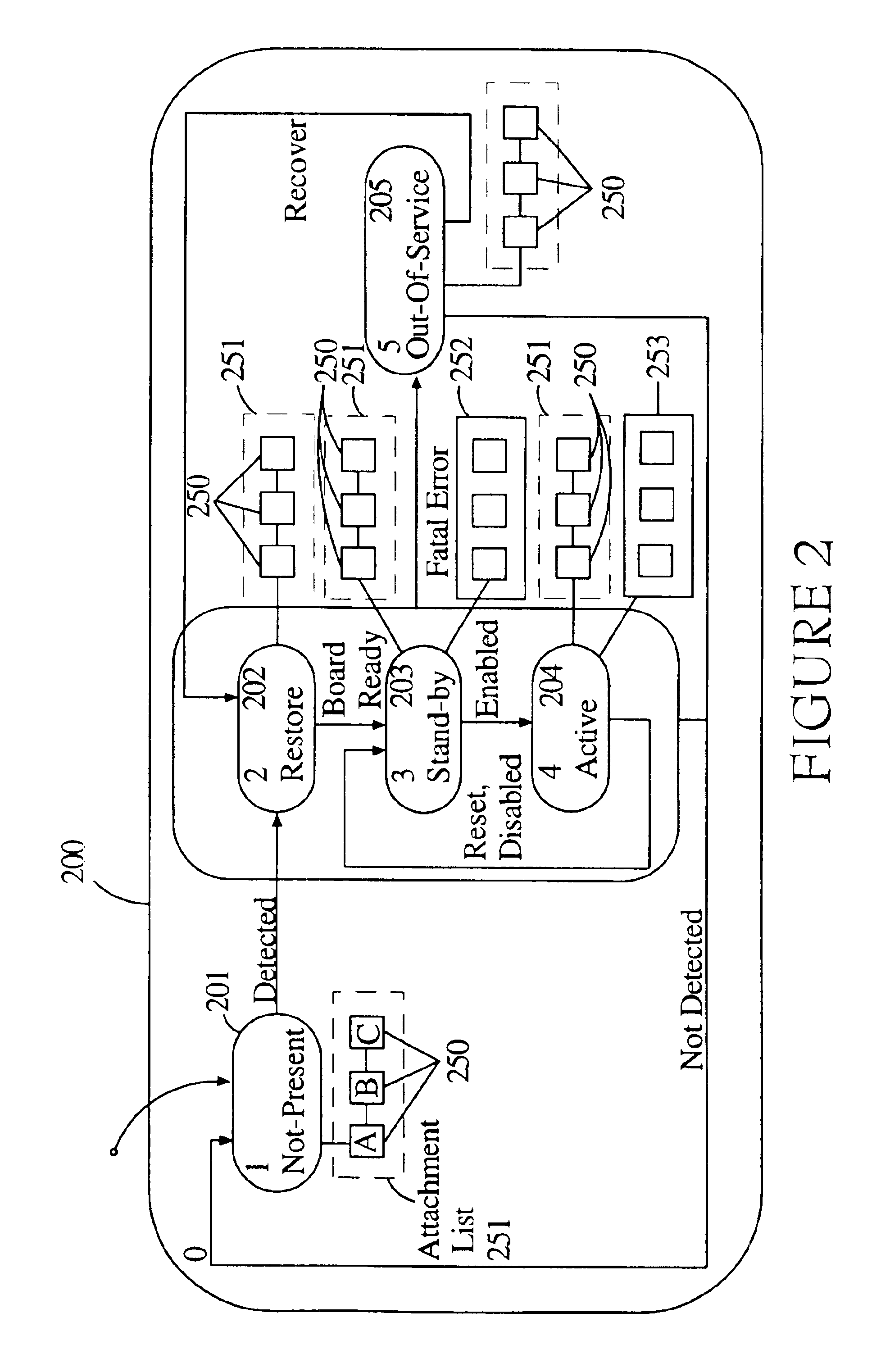Hybrid agent-oriented object model to provide software fault tolerance between distributed processor nodes
a distributed processor and object model technology, applied in the field of hybrid agent-oriented object model to provide software fault tolerance between distributed processor nodes, can solve problems such as loss of node functions
- Summary
- Abstract
- Description
- Claims
- Application Information
AI Technical Summary
Benefits of technology
Problems solved by technology
Method used
Image
Examples
Embodiment Construction
The implementation of EDRB of the present invention employs a hybrid solution, as it blends the agents with the structure and control of the EDRB. Application tasks are implement by agent objects that are instances of C++ programming. The agent objects (agents) are implemented as finite state machines (circuit state machines) that recognized two distinct modes of operation. One mode executes a primary routine block; the other executes an alternate routine block. An application task performs the acceptance test block and outputs the results for use by the node manager in that processor node.
A circuit state machine 200, an example of which is shown in FIG. 2, implementing the agent objects is comprised of 5 states including Not-Present 201, Restore 202, Stand-by 203, Active 204, and Out of Service 205. The circuit state machines are not limited to these states, more or less states are envisioned as required in certain applications.
The circuit state machines begin in the NOT PRESENT st...
PUM
 Login to View More
Login to View More Abstract
Description
Claims
Application Information
 Login to View More
Login to View More - R&D
- Intellectual Property
- Life Sciences
- Materials
- Tech Scout
- Unparalleled Data Quality
- Higher Quality Content
- 60% Fewer Hallucinations
Browse by: Latest US Patents, China's latest patents, Technical Efficacy Thesaurus, Application Domain, Technology Topic, Popular Technical Reports.
© 2025 PatSnap. All rights reserved.Legal|Privacy policy|Modern Slavery Act Transparency Statement|Sitemap|About US| Contact US: help@patsnap.com



